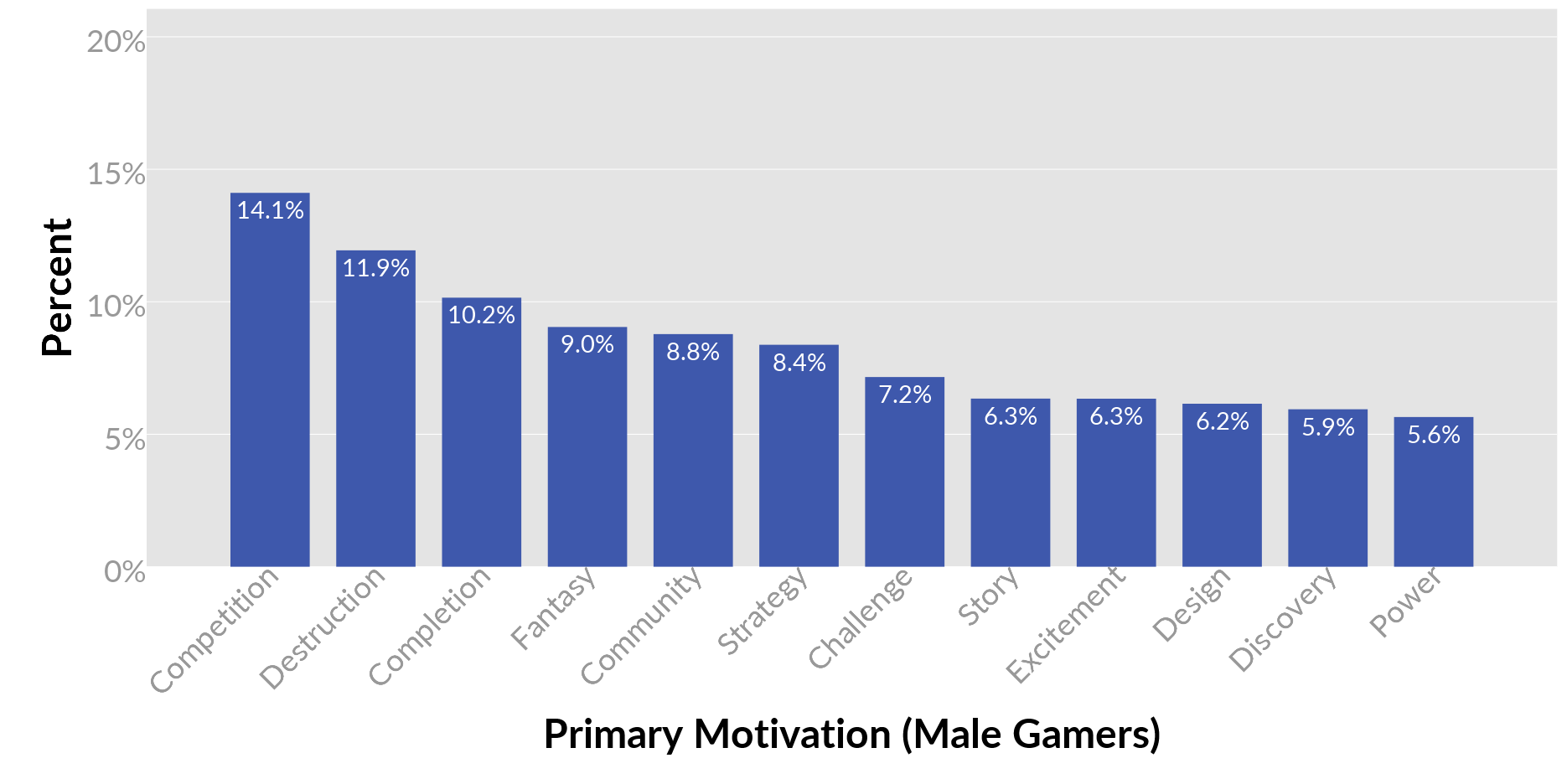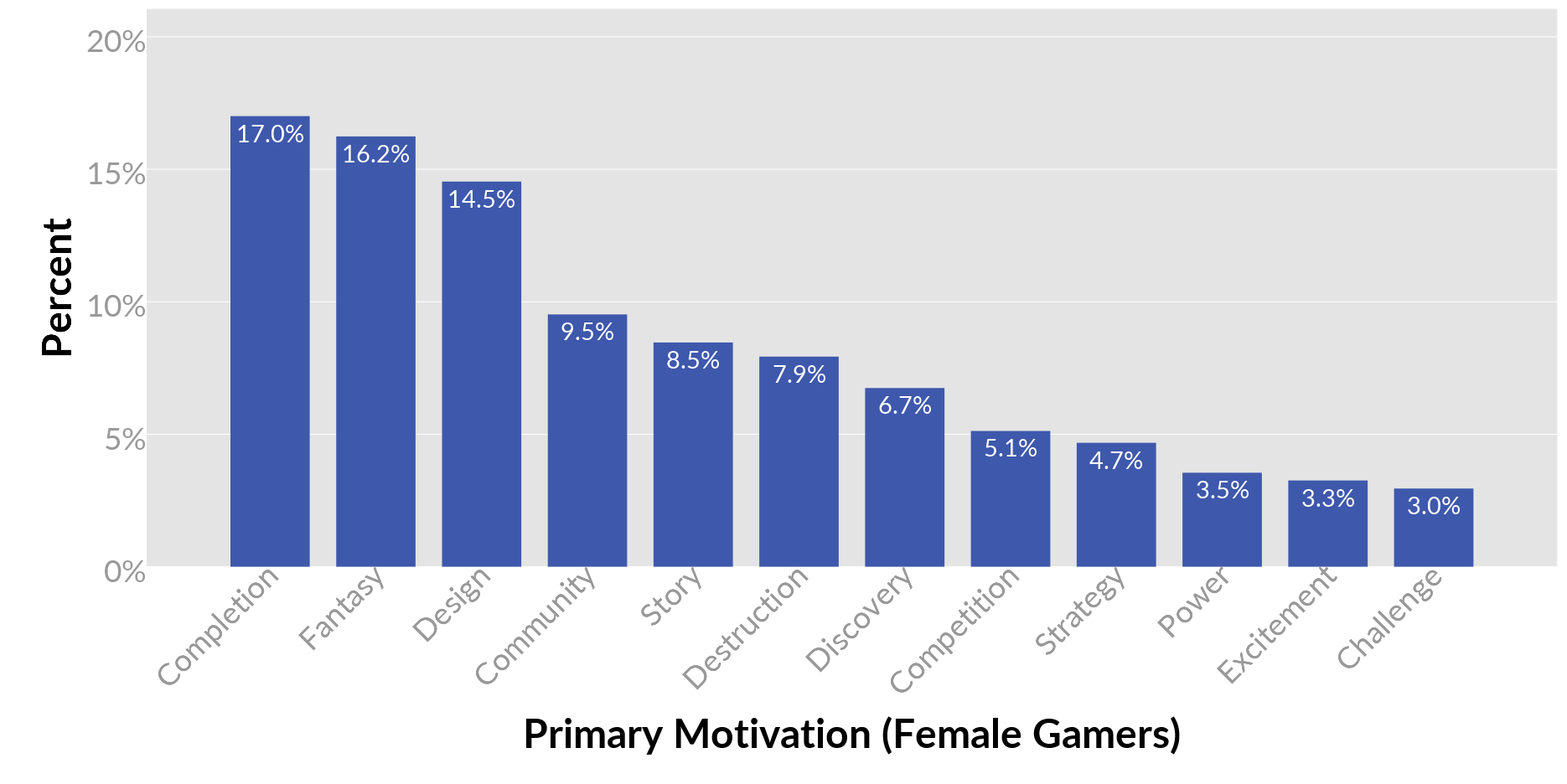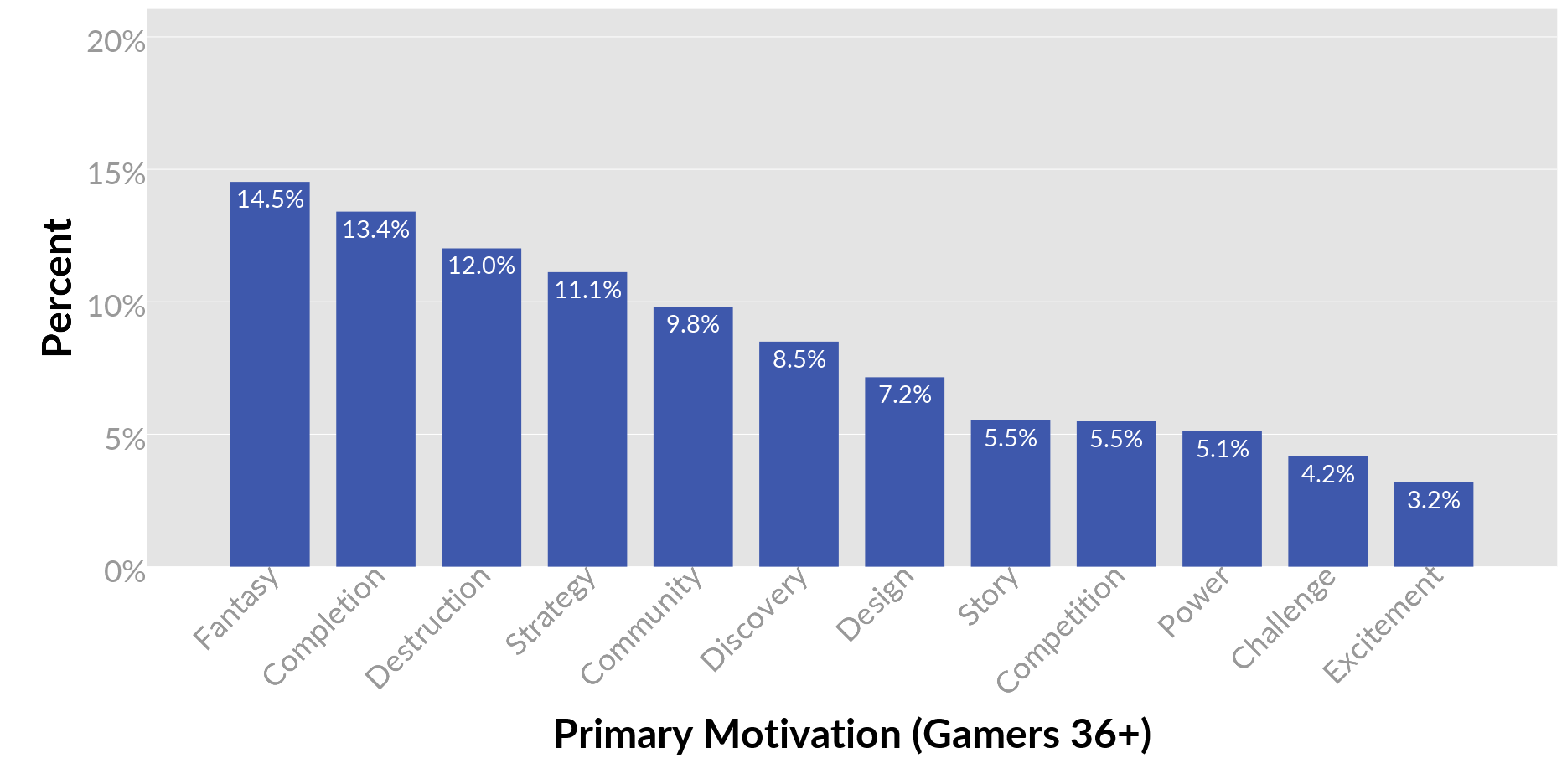Study: what motivates users to play?
The analytical company Quantic Foundry, during a survey of 250 thousand people, identified the most common types of motivations among players.
During the survey, analysts identified six groups of motivations. Each cluster has a pair. Each cluster is responsible for a certain type of striving for something. Motivation determines the nature of the aspiration.
- Action Cluster
It includes the motivation “Destruction” and “Excitement”. Users who are motivated by the first motivation prefer explosions, chaos, weapons (as in Call of Duty and Battlefield), and for the second group, fast events and the intensity of what is happening in the game are important (Street Fighter and Injustice).
- Social Cluster
Within this cluster are the motivations “Competition” and “Community”. The first one is responsible for striving for rivalry in duels, open struggle (League of Legends), and the second one is responsible for socialization and cooperation with other users when playing (playing Mario Kart at a party).
- Cluster of Mastery
Here the motivations are “Challenge” and “Strategy”. Players who are driven by the “Challenge” prefer those projects in which the skills and abilities of the player come first (Dark Souls), for users who put “Strategy” first, games that require informed decision-making and planning (Fire Emblem and Europa Universalis) are important.
- Cluster of achievements
Motivation for “Completion” prevails in players who want to complete each mission and collect each collection. The motivation of the “Force” drives to become as powerful as possible in the game by collecting all the things required for this in the game.
- Immersion Cluster
In this cluster, the motivations are “Fantasy” and “History”. The first is responsible for the desire to become someone else in the game, to play someone else’s role (Mass Effect), the second is for the interest in the plot, dialogues and characters.
- Cluster of creativity
Here are the motivations of “Search” and “Design”. The first type of motivation prevails in players who constantly ask themselves the question “What if”. For them, virtual worlds are ingenious inventions that need to be solved. The motivation of “Design” drives players who seek to express themselves through a project, ready to spend hours building houses or choosing the appearance of their hero.
Among men, the main motivations are: “Competition”, “Destruction” and “Completion”.
Among women , the leading motivations include: “Completion”, “Fantasy” and “Design”.
The prevailing motivation among the young audience of players (13-25 years old) is a “Contest”. The rest are significantly behind him.
The situation among the adult generation of players (from 36 years old) is strikingly different. The leading motivations are: “Fantasy”, “Completion” and “Destruction”.
The main conclusion that analysts make is that the motivation with the least risk (for the game) and the greatest benefit in terms of use is “Completion”. It is present in the Top 3 in all motivation tops.
A source: Quantic Foundry










